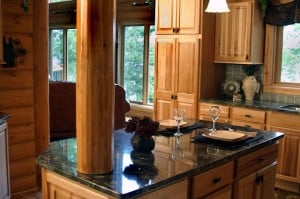12 Cheap and Easy Summer Home Projects
 Homes take a beating on the outside, from wind, rain, sun, insects and snow. Summer gives you a chance to repair damage, protect your home and keep its face to the world looking bright.
Homes take a beating on the outside, from wind, rain, sun, insects and snow. Summer gives you a chance to repair damage, protect your home and keep its face to the world looking bright.
Home maintenance is like housework, flossing and exercise: You might as well work it into your routine, because the penalties are worse than the jobs themselves.
Here’s just one example: Cleaning the gutters costs nothing if you do it yourself, and roughly $100 to $200 if you hire a service. Ignore the job, though, and a ruined roof or damaged foundation could cost you thousands or tens of thousands of dollars to repair. Here’s why:
Leaky or overflowing gutters can rot fascia boards (the roof edge under the gutters), soffits and rafters.
Water may drip onto window trim, rotting it.
Leaky gutters let water pool at the foundation, causing basement leaks, mold and even foundation damage.
1. Paint
Fresh paint doesn’t just make your home look great. It’s a protective skin against UV light and moisture.
Earth911 tells where to get free paint:
Many household hazardous waste (HHW) facilities around the country have product exchange rooms, sometimes called swap rooms or swap shops. These rooms offer safe, unopened HHW items for public consumption, keeping them out of the landfill and letting you save some money.
Call your city to ask about your local HHW facility. Other sources for cheap paint:
- Habitat for Humanity’s ReStores (find one near you) sell “gently used” tools and supplies for home projects at low cost.
- See EcoBusinessLinks’ national directory of recycled and surplus building materials and suppliers.
- Search online for a city’s name and “salvaged building supplies” or “recycled building materials.”
2. Mulch
Laying a 1- to 3-inch layer of mulch on garden beds spares a lot of weeding. Mulch smothers weeds by depriving them of oxygen and light and it holds moisture in the soil, saving water and giving plants a consistent source of moisture.
Mulch includes many materials placed on the ground to prevent weeds from growing, including rocks, gravel and plastic. Leaves, grass clippings and tree bark are organic materials most often used on garden beds. Hay and straw also are used in vegetable gardens. Organic mulch breaks down into nutrients that feed plants.
Be careful in vegetable gardens to avoid mulch with pesticides, herbicides or other garden chemicals. Also, used incorrectly, mulch can damage or kill trees and ornamental plants by depriving them of oxygen, so leave a 3- to 5-inch space around stems of younger plants and give mature tree trunks eight to 12 inches. North Carolina State University’s Cooperative Extension Service explains how to safely use mulch.
Free or cheap sources of mulch:
- Grass clippings. Let them cool down before mulching.
- Raked leaves. Shred first with a shredder or lawn mower so air and moisture can reach the soil beneath.
- Shredded wood or bark. Electric utility companies and tree services may have cheap or free wood chips or shredded bark. Also, some cities collect leaves and branches, chipping them for use by local residents.
- Cardboard. Ask recycling centers and appliance stores for free cardboard. Wet it down, cut it to fit and place it around plants, covering with soil or bark mulch. This is best in wet climates where cardboard breaks down into the soil. WikiHow gives instructions on using cardboard and has more ideas for cheap mulch.
3. Seal wood decks
The cheap way to approach this job is to do it yourself. It’s not difficult, although it’s nice to have help. You’ll spend a couple hundred dollars on supplies and rented tools. Do it annually or every two to three years, depending where you live. Ignore the job long enough and you’ll need to replace the deck, at a cost of thousands of dollars.
Read the entire article here.
Read more at http://www.moneytalksnews.com/2014/06/02/12-cheap-and-easy-summer-home-projects/#4f2LmYs5xjDE2Rbw.99

